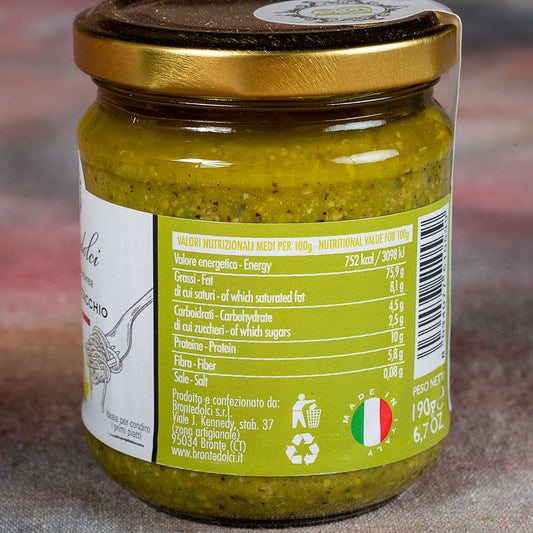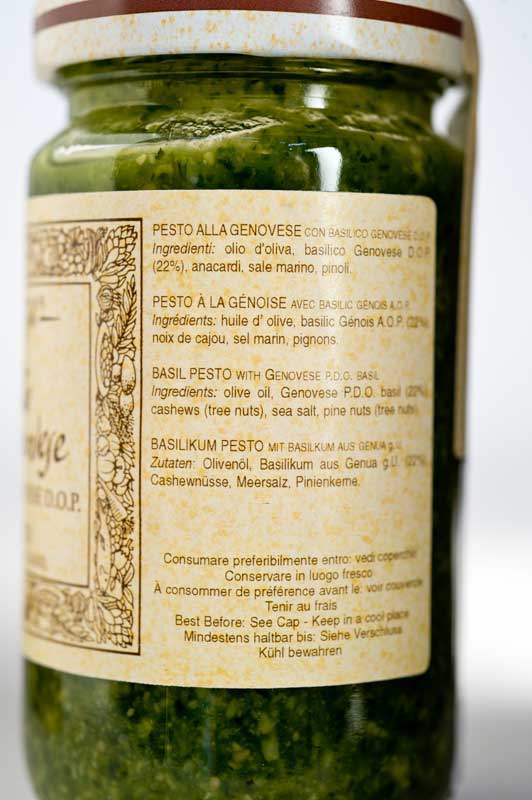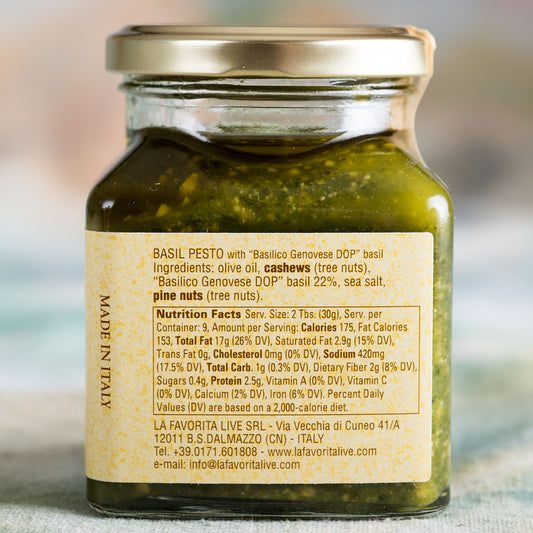Pesto
about Pesto: click here to read more
Pesto is a flavorful sauce that originated in Italy, specifically in the region of Liguria, in the northwestern part of the country. The word "pesto" comes from the Italian verb pestare, meaning "to crush" or "to pound," which refers to the traditional method of making pesto by crushing the ingredients in a mortar and pestle. The sauce has a long history, dating back to ancient times, though the version we know today became popular in the mid-20th century.
The origins of pesto can be traced back to ancient Roman times, where a similar sauce called moretum was made by combining garlic, cheese, herbs, and olive oil. This early version was also ground using a mortar and pestle, much like modern pesto.
However, the modern version of pesto, made with basil, pine nuts, garlic, Parmesan or Pecorino cheese, and olive oil, specifically originated in Genoa, the capital of Liguria, in the 16th century. Liguria, with its lush hillsides of basil and abundant olive trees, provided the ideal ingredients for this herbaceous sauce. The combination of fresh basil and olive oil was an important part of regional cooking, and by the 19th century, the Genoese had refined the recipe to the version we recognize today.
Pesto was traditionally made by hand with a mortar and pestle, but with the advent of blenders and food processors in the 20th century, making pesto became faster and easier. The sauce gained widespread popularity after the publication of a recipe for "pesto alla Genovese" in the 1940s and 1950s, eventually becoming one of the most iconic Italian sauces worldwide.
The most famous and common variation of pesto is Pesto alla Genovese. This is the classic basil pesto that originated in Genoa, Liguria. It is made with fresh basil, garlic, Parmesan cheese (or Pecorino cheese), pine nuts, and extra virgin olive oil. The ingredients are traditionally ground together in a mortar and pestle, though modern recipes often use a blender or food processor for convenience.
Pesto alla Genovese is typically served with pasta, especially trofie (a short, twisted pasta from Liguria), or trenette (a type of long pasta), but it can also be used as a spread for bread or as a topping for meats, vegetables, or even pizza.
-

 Restocking - choose Notify me
Restocking - choose Notify meBrontedolci Pistachio Pesto
Regular price $20.95 USDRegular priceUnit price / per$0.00 USDSale price $20.95 USDRestocking - choose Notify me -
La Favorita Pesto alla Genovese - 1000g
Regular price $57.95 USDRegular priceUnit price / per$0.00 USDSale price $57.95 USD -
Pesto alla Genovese
Regular price $14.95 USDRegular priceUnit price / per$0.00 USDSale price $14.95 USD -
 Restocking - choose Notify me
Restocking - choose Notify mePesto alla Genovese - 500g
Regular price $29.95 USDRegular priceUnit price / per$0.00 USDSale price $29.95 USDRestocking - choose Notify me -
Pesto alla Genovese - 270gr jar
Regular price $17.55 USDRegular priceUnit price / per$0.00 USDSale price $17.55 USD








